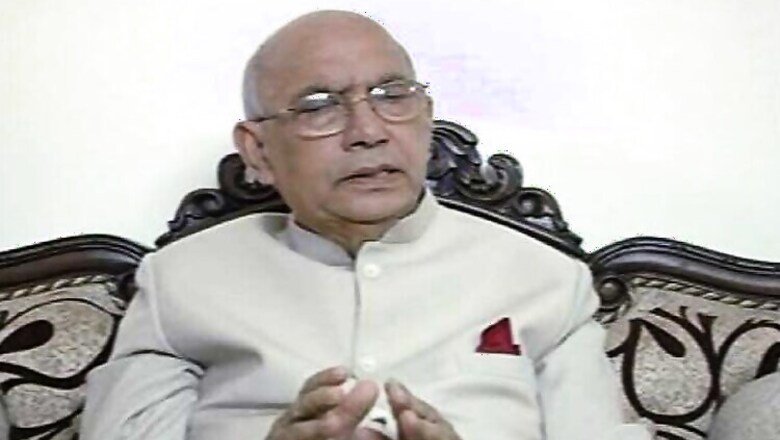
views
New Delhi: It was not only the CBI which incurred the ire of the special 2G court over its faulty probe but the role of a former Cabinet Minister in the UPA government also came under the scanner in the 2G case verdict.
A noting by then Union Law Minister Hansraj Bhardwaj has been questioned by the 2G judge, who noted that a contrary opinion was given by the veteran Congress leader to apparently stall the process of issuing new 2G licenses under A Raja’s instructions.
Special judge OP Saini in fact attributed “malafide” to Bhardwaj and the top officials of the Law Ministry when they opined that an Empowered Group of Ministers (EGoM) should take a call on the right procedure for inviting applications and issuance of 2G spectrum licenses.
“The facts and circumstances rightly show that the opinion of Law Ministry, on the face of it, was malafide having been obtained against established procedure of government working… It appears that the contrary opinion was aimed not at facilitating smooth disposal of applications by DoT but stalling the process of issue of new licences by it,” held Saini.
The judge noted that the when the DoT first sought an opinion, the Joint Secretary (Law) sent back the reference on October 31, 2007 on the ground that full facts were not mentioned in the DoT’s request. But on the same day, this Joint Secretary spoke to an official in the DoT and asked for the file again and it was returned “unauthorisedly” to the Law Ministry without an approval of then Telecom Minister A Raja or other pertinent authority.
“When the file had already been returned on the ground of incomplete facts and documents, there was no reason for the Law Secretary to recall the file and again repeat the same thing by using different language to the effect that the issues were too broad and needed refinement. However, instead of returning the file to DoT with this observation, he marked the file to the Law Minister,” said the judge.
On November 1, 2007, Bhardwaj recorded that “it is necessary that the whole issue is first considered by an empowered group of Ministers and in that process legal opinion of AG can be obtained”.
The judge therefore questioned that when the Law Minister agreed that the issues were needed to be refined further, “the file ought to have been returned to the DoT, but instead of returning the file, he without any reason suggested that the matter may be referred to EGoM.”
2G judge Saini questioned the views of the then Law Minister: “There was no proposal from the Law department that the matter should be referred to the EGoM. However, the Law Minister without any proposal from below and without citing any good reason, on his own, all of a sudden introduced this idea of referring the matter to EGoM.”
Commenting on the Law Ministry’s conduct, the court said that no government department is expected to give two contradictory opinions on the same issue without citing good reasons or change of circumstances because this would be “breach of official discipline and protocol” and “such conduct by senior government functionaries may lead to administrative chaos.”
According to the trial court, the circumstances in which this contrary opinion was given were wholly unreasonable and suspicious. “It appears that the contrary opinion was aimed not at facilitating smooth disposal of applications by DoT but stalling the process of issue of new licences by it,” emphasized the judge.




















Comments
0 comment